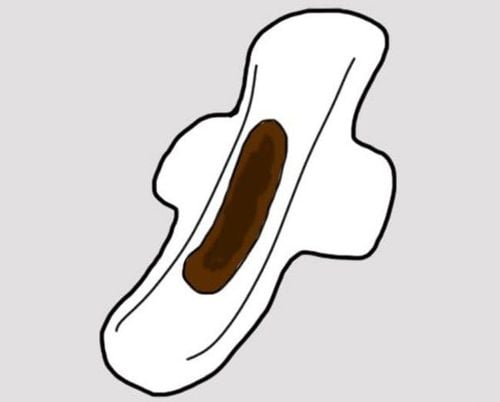This is an automatically translated article.
Cervical narrowing is one of the abnormalities in the uterus that causes infertility in women. The opening of the cervix is narrower than normal and even in some cases, it is completely closed, which prevents sperm from finding an egg to fertilize it and makes it difficult for fertility treatments.1. The role of the cervix in pregnancy
The cervix plays several important roles in fertility and pregnancy as follows:During the menstrual cycle, endometrial tissue exits the uterus through the cervix. The cervix is the passageway for sperm to swim from the vagina through the cervix to the fallopian tubes and fertilize them. The cervix contains mucus-producing tissue. Cervical mucus is essential to help sperm move efficiently up the uterus during ovulation and to help prevent infection and prevent unwanted microorganisms from entering the uterus. During pregnancy, the cervix creates a mucus plug to protect the fetus. This mucus plug is also kept tightly closed, like a seal, until the time of birth.

Cổ tử cung có vai trò gì?
2. How does cervical stenosis affect fertility?
Cervical stenosis can negatively impact fertility, directly and indirectly.2.1 Sperm Pathway Blocked or Limited If the cervical opening is blocked or too narrow, sperm cannot or has difficulty reaching the fallopian tubes.
2.2 Inflammation of the uterus and the risk of endometriosis Bleeding during menstruation can be completely blocked (in severe cases) or trapped and cannot easily drain out leading to blood pooling in the uterus supply, causing pain and inflammation. Over time, a hematoma is formed.
If an infection occurs, the uterus can become filled with pus, also known as hematometra. Even if the cervix is slightly open and blood can flow out, menstrual blood can sometimes flow back up through the fallopian tubes leading to endometrial damage and endometriosis.
2.3 Decreased cervical mucus secretion Cervical stenosis is most commonly caused by scar tissue. The scar tissue can affect the production of cervical mucus. Sometimes, surgery causes the scar tissue associated with cervical surgery and results in further restriction of cervical mucus production. If there isn't enough cervical mucus, sperm can have trouble moving and surviving to reach the egg.
2.4 Complications During Fertility Treatment Both IUI and IVF treatments require a catheter to be inserted inside the cervix. With IUI, the catheter that transports the sperm has been washed. With IVF, the catheter carries the fertilized embryo. In either case, if the opening of the cervix is blocked or too narrow for the catheter to pass through, making it difficult to treat infertility, the doctor must take measures to insert the catheter.
2.5 Increased risk of miscarriage and premature birth Treating cervical stenosis can weaken the cervix or damage cervical tissue. Later, during pregnancy, this can lead to the cervix not being strong enough or not closing properly to keep the pregnancy safe. Leads to miscarriage in the last 6 months or premature birth.

Hẹp cổ tử cung có thể dẫn đến nguy cơ sảy thai
3. What causes cervical stenosis?
The most common cause of cervical stenosis is cervical surgery.Other possible causes of cervical stenosis include:
Congenital (born with a closed or narrow cervix) Cervical dysplasia (precancerous cells) Cervical cancer or endometriosis Uterus Infection of the uterus or cervix Radiation therapy to the cervix Asherman's syndrome Endometrial ablation Menopause
4. Cervical narrowing symptoms
Depending on the severity, cervical stenosis may be detected when looking for the cause of the symptoms. Symptoms may include:Irregular menstrual bleeding No or very little Menstrual cramps If these symptoms occur after cervical surgery the doctor may suspect cervical stenosis. bow. In addition, infertility is also a possible symptom of cervical stenosis.
5. Treatment of cervical stenosis
Cervical stenosis can be treated with something like:Your doctor may start dilating your cervix with dilatation. This is a piece made from a natural or synthetic material that is inserted into the cervix. Algae flakes will stay in place for hours. The algae will absorb fluid from the cervix and dilate, helping the cervix to dilate. Medicines can be used to soften the cervix, making it easier to dilate.
Sometimes a stent is used to keep the cervix open and to prevent scar tissue from forming and closing again. This stent will be withdrawn after a few weeks.
If dilators are unsuccessful or inappropriate, the doctor may perform a hysterscoptic technique. This is a surgical technique performed during a hysteroscopy or laser treatment to remove scar tissue.
In women who do not want to become pregnant, the doctor may insert an IUD after treating cervical stenosis. The IUD works to prevent scar tissue from forming again. If you want to get pregnant again in the future, your doctor may remove the IUD to restore fertility.
There are potential risks to cervical stenosis treatments depending on which treatment is used, including:
Uterine rupture Infection Cervix decreased ability to hold a pregnancy (in in future pregnancies)
6. Possibility of natural pregnancy after cervical stenosis treatment

Nếu bạn không có thai, bạn có thể cân nhắc lựa chọn các biện pháp hỗ trợ điều trị sinh sản
At Vinmec International General Hospital, we are currently implementing BASIC Gynecological Examination and Screening PACKAGE, helping customers detect inflammatory diseases early, so that the treatment process will be easy and cost-effective. least. Screening can also detect early gynecological cancer, (cervical cancer) cervical stenosis even when there are no symptoms.
Please dial HOTLINE for more information or register for an appointment HERE. Download MyVinmec app to make appointments faster and to manage your bookings easily.













